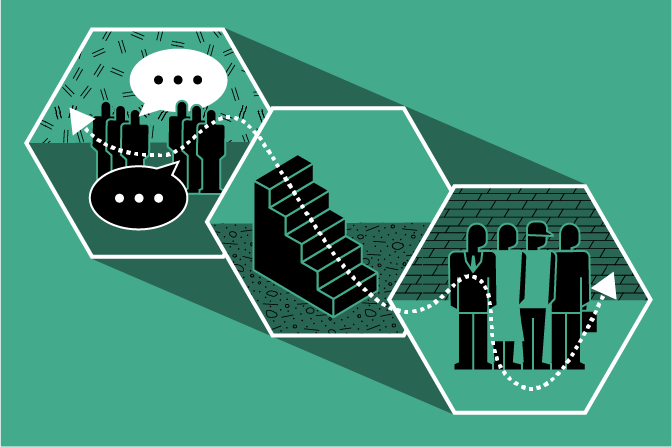
A key challenge to any collaboration is developing strong communication. Architecture and social science have not historically shared a lexicon or means of representing information. As a result, practitioners in these fields have created a sort of pidgin language to allow them to work together—communication is possible, but more difficult than it could be. This dynamic is also present in data and visualization. Architects might have a predisposition to consume things visually, whereas social scientists may find more meaning in text or statistics. Architects may be well versed in standards, but not in the cultural context from which those standards emerge.
Yet, there is also a natural overlap between these fields: human behavior is profoundly shaped by the spaces people inhabit and occupants also adapt spaces to suit their needs. The AIANY Social Science and Architecture Committee fosters discussions of research and the meaning of form to build the shared understanding necessary for successful collaboration. The committee advocates for an expanded definition of the architecture profession that provides new avenues for collaboration and addresses questions of advocacy and inclusion through design. It seeks new ways to measure experience and strengthen the understanding of the relationship between spaces and behavior.
Some of the questions the committee tries to answer:
- With which disciplines should architects seek to communicate? Why?
- How can conversations about design become more inclusive of a wide range of needs?
- How can the human experience of a space be centered in conversations about its design?
- How can data and information be represented in a way that speaks to both designers and researchers?
Key Terms and Concepts
- Expanding definitions of the profession, areas of collaboration, advocacy, and inclusion
- Pathways and barriers to social science and research
- Perspectives on the profession, within the design and construction industry. Where do consultants/collaborators sit?
Past events have included:
- Programming Spaces: Shaping User Experience from the Building to the Space In Between – March 10, 2016
- Edge Collaborations: Creative Partnerships with Social Science – August 19, 2015
- In Pursuit of Performance: Financial and Social Metrics of Architectural Success – December 11, 2017
- Busting Myths: How Can Social Research Impact Design? – February 22, 2017
- Fall Film Social: Living Salk Institute – September 5, 2018
- Workplace Design Part II: Coworking – October 23, 2018







